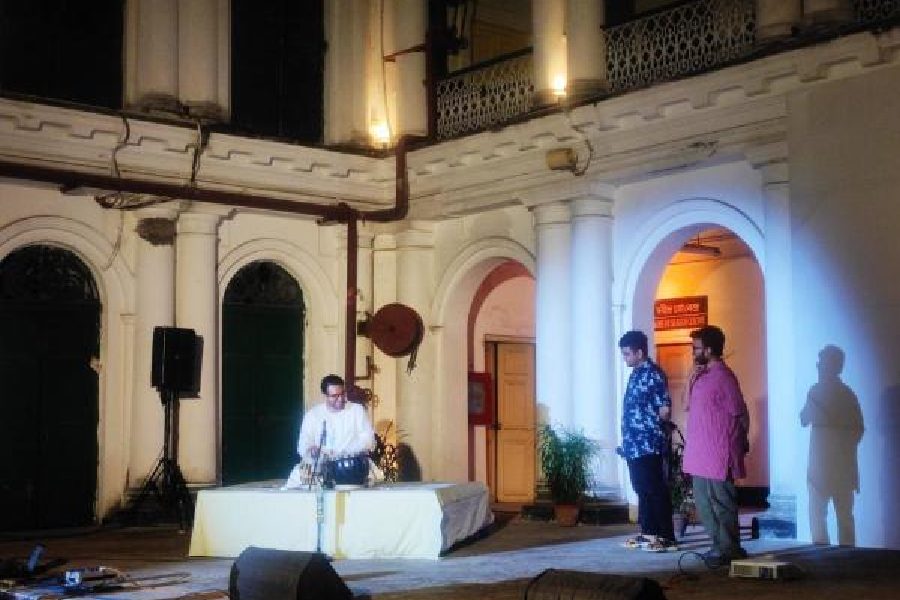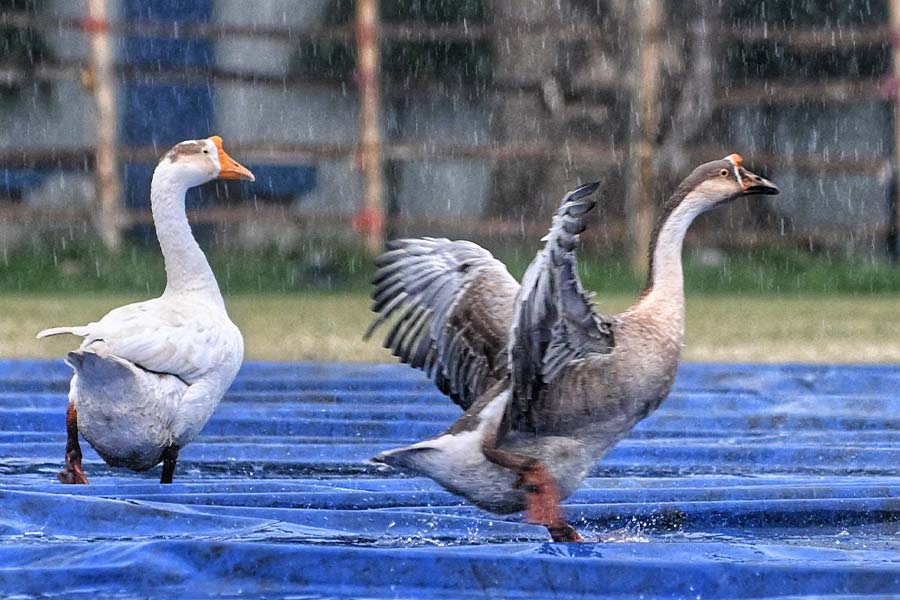The curtain came down on the third edition of The City as a Museum organised by DAG last week, rounding up a cultural festival spread over nine days at various sites in the city and beyond.
The final event Gab-Sur-Kinaar was on the thakurdalan of Jorasanko Thakurbari with the tabla as the main actor. Artists Asif Khan and Rohen Bose unpacked the percussion instrument beat by beat illustrating the resonance of the kinaar and the gab.
Bose said the instrument had travelled to the country around the 12th century from the Middle East and had undergone a lot of transformation.
“There is no clear origin of the tabla except that the Turkish people had brought something that had skin on top and was played on top. Prior to this, percussion instruments were played on the side. Tabk evolved into the tabla,” he said.
The tabla is made of sheesham and mahogany wood with camel skin making up the strings, and layers of cow skin and goat skin. The black top is called the gab. “The inner layer, the sur, resonates more than the kinar, the outer skin, and the gattas or gulis keep the tension,” said Bose.
The evening ended with a recital by Alla Rakha Kalawant on the sarangi and Asif Khan on the tabla.
An afternoon spent at the Esplanade and Chetla bus depots revealed some intriguing bus art where artist Baiju Rahaman Mondol painted some idyllic scenes and alpona designs on the tin sides of a bus. Titled Yellow, Blue and Art on the Move, the session involved bus art spotting that revealed how popular culture permeated our road space.
Artists like Mondol paint the sides of buses in a record two hours time, transforming the tin vehicle into a brightly painted mobile transport. “Often bus owners ask us to paint gods and goddesses. We comply. We also add our bits with our own designs,” said Mondol.
A walk through Natun Bazar led to a mishti trail with some generous samplings of freshly made sweets. Titled Sandesh er Sandhane, the walk led by Sumona Chakraborty started with a visit to the Dudh patty (milk stretch) at 4pm as trucks carrying milk canisters began to gather.
The secretary of Jorasanko Dudh Byabsayee Samity said each day the samity sells 2.5 lakh litres of milk. Before the pandemic, the figure was 4 lakh.
“During Covid, many of the cattle owners had to let go of their herds. They have not been able to recover yet and get new cattle. So, the production of milk has not revived since the pandemic,” said the secretary.
At Baristerbabu’r Bari in Beleghata, a theatre installation and performance that moved to rooms, nooks, corners, staircases and the terrace told the story of women in Bengal from the cusp of the 19th and early 20th century based on Sreepantha’s collection of essays Keyabat Meye.
Feminist queer collective Samuho kept the audience on their toes. The audience followed the naptini for around three hours through the dalan, the shobar ghar, the baithakkhana, the henshel and the tipcal (tubewell) to peep into the lives of women trying to negotiate the Renaissance events of widow remarriage, women’s education and stopping of child marriage. And yet, the naptini held a mirror to the audience of today to ask if things have really changed since then.
Director Titas said: “This theatre production tries to give a similar experience as visiting a museum. We narrate a piece of history like a story in a house that belonged to those times. We have tried to portray a large era in small vignettes.”






